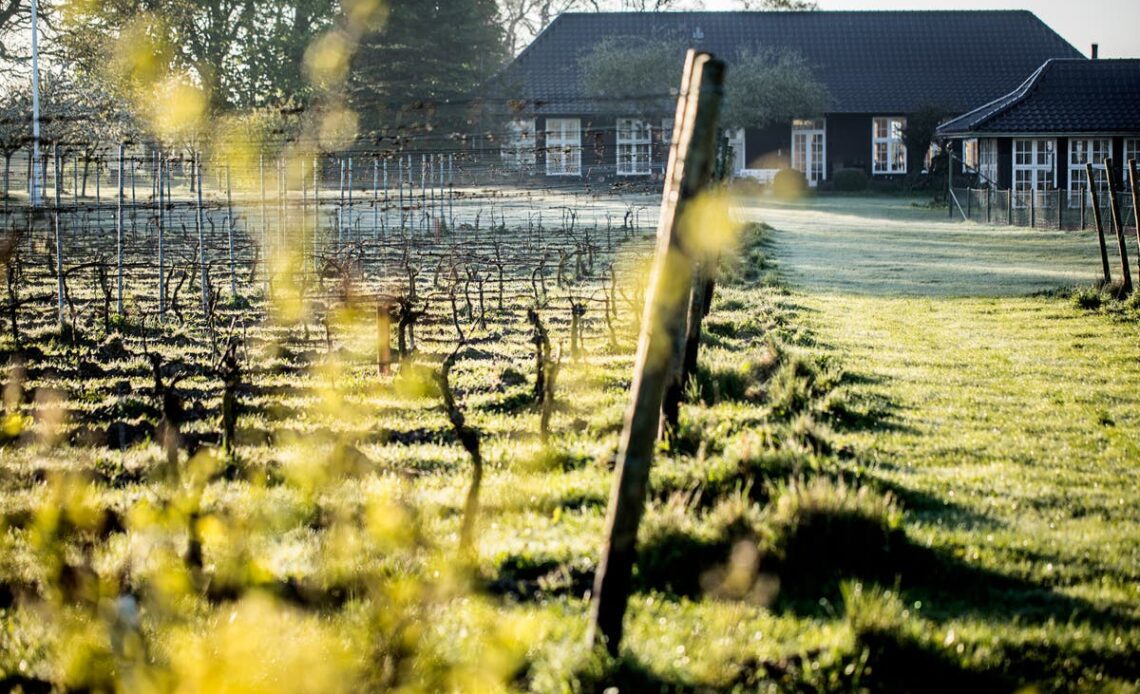When Jacob and Helle Stokkebye set out to create their own minimal impact, organic wine label, they knew a sustainable footprint was non-negotiable. Wholly convinced it was worth the effort, they planted nine different sorts of vines in 2009, ambivalent to the cold northern climate of Funen, the island at the heart of Denmark where their 16-acre winery is based.
They ditched the harmful chemicals, adhered to a natural wine-making philosophy, and set out on a quest to create the ideal wine and become the greatest, most sustainably minded vineyard in the country. Even if, at times, it made little sense to their neighbours.
“I actually started to doubt what we were doing,” says Jacob, floating around the By Stokkebye tasting room in a rootsy sommelier’s apron. “It’s an expensive memory, for sure, but we’ve learnt from our earlier harvests and, now, here we are.”
Skaarupøre Vingard are bio-dynamic, organic and experimental wine-makers
(Skaarupøre Vingård)
In the Noughties, the food world went gaga for ingenious new Nordic cuisine from Denmark, a movement that stressed sustainability, hyper locality, seasonality, environmental responsibility and respect. All this got transmitted into cool food spots that hogged the spotlight in Copenhagen restaurants (namely Noma, Geranium, Amass and Kadeau) that topped the best-in-world lists.
And yet one thing was missing: Danish wine made with the same mindset. The reason? Denmark was only accepted as a commercial wine-growing area within the EU in 2000 and, excluding a handful of hobbyists, there was nothing to bottle.
Fast forward to today and how times have changed. There are now more than 100 venerable producers across the country, with the bulk concentrated along the warmer coastlines of Zealand, Funen and Jutland. Plus, the amount of wine produced year on year is growing exponentially. It could have all gone wrong, but it hasn’t, and this straight-line graph is a glimpse, perhaps, of the future of wine in Denmark – and maybe the rest of the world.
Most people still haven’t bought into the idea of Danish wine yet, but that’s our target
“Our ambition is to do for white and sparkling wine what Noma did for food,” says Jacob. “Most people still haven’t bought into the idea of Danish wine yet, but that’s our target.”
This underlines the vinicultural shift in the…
Click Here to Read the Full Original Article at The Independent Travel…
